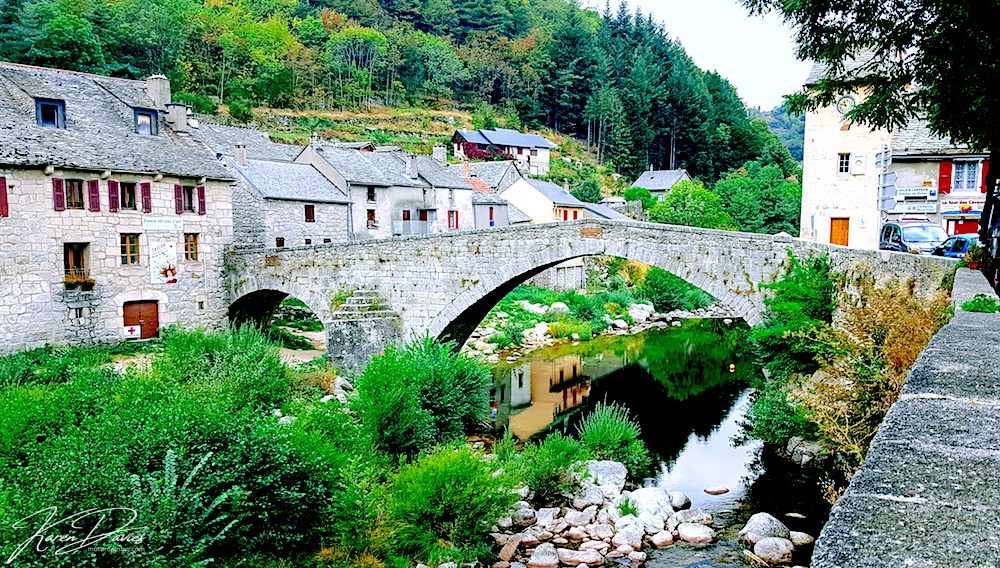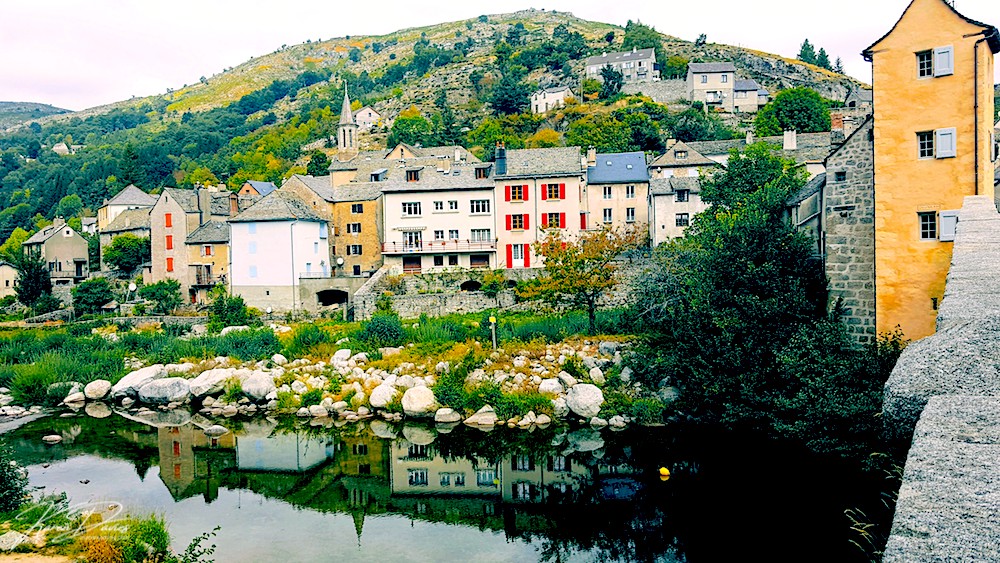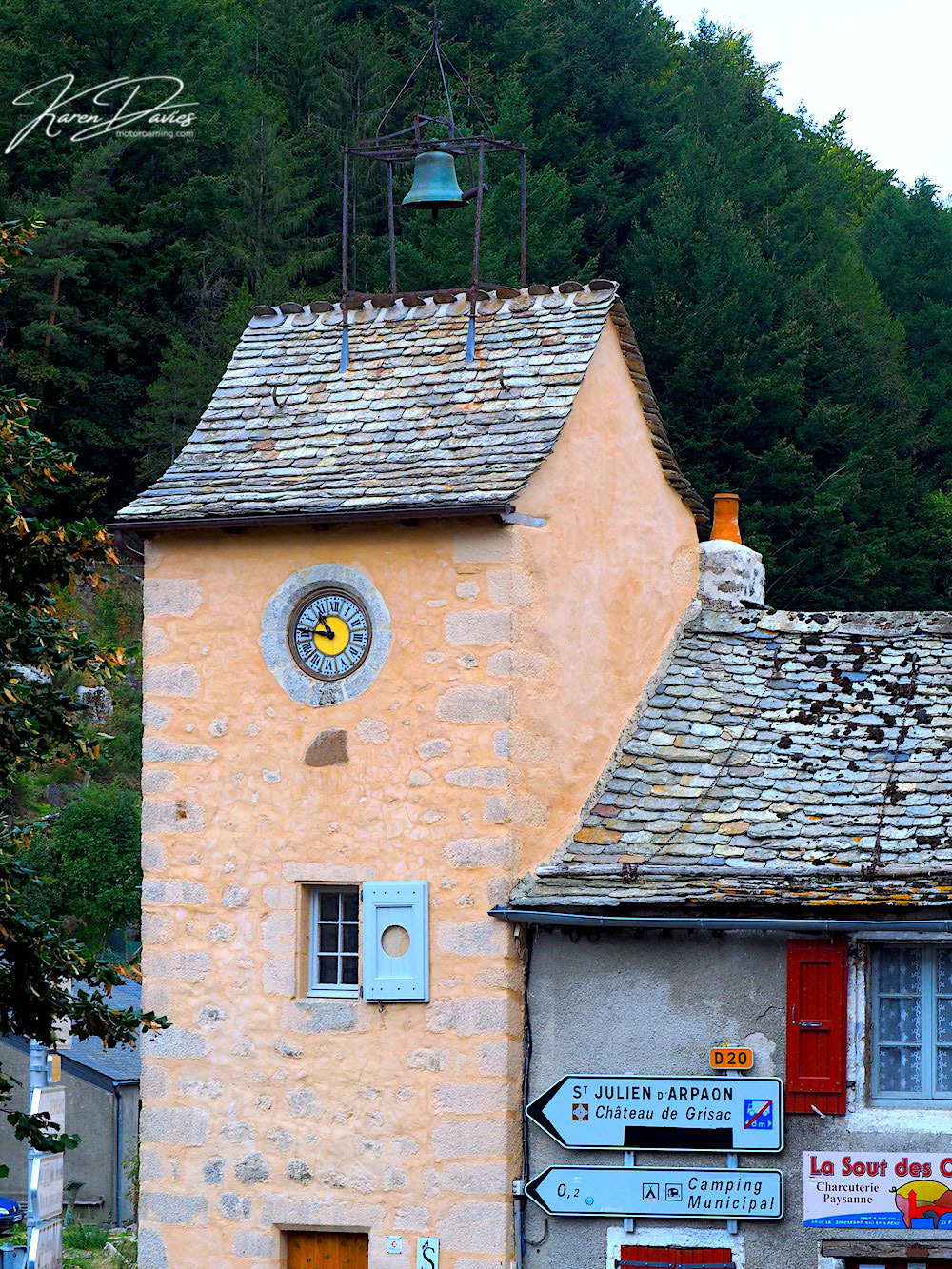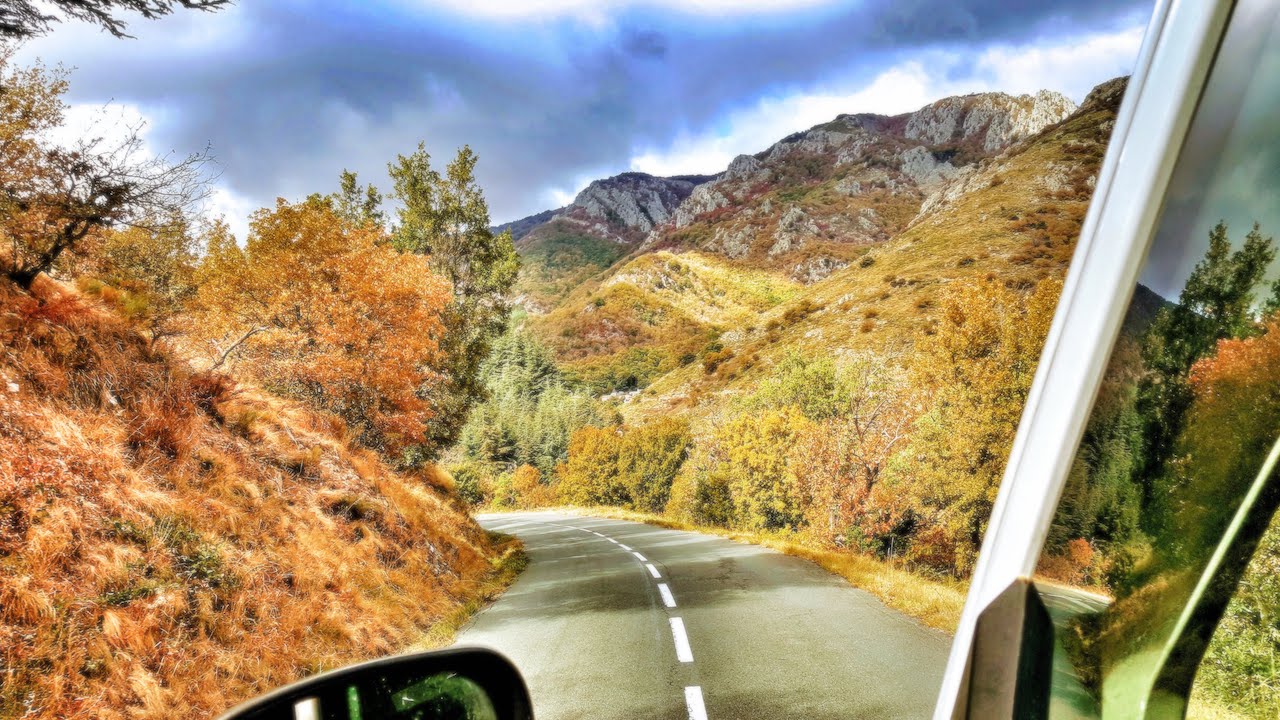France is one of Europe’s most popular destinations and with just under 250,000 sq miles, you could be forgiven for not seeing it all. We’ve been visiting France for a couple of decades, made easier by my parents who had a house in Brittany going back 10 years ago. It’s a beautiful yet vast country that is so diverse we never tire of it. With more than 150 Les Plus Beaux Villages dotted around the country that ooze character, France will charm you. And away from the obvious main sights of Paris, the lavender fields of Provence and the southern resorts and beaches, this country has some incredible hidden secrets. Three of which we were about to discover as we travelled from Chambéry, south of Annecy to Beziers on the south coast. Check out the three Natural Park treasures that we passed through in a bid to head for the coast.
Our route; Les Manches, Chambéry to Grenoble, 65km (about 40 miles).

Having nestled ourselves at a lovely campsite just outside Chambéry to do some much needed repairs to our van, our feet started itching on day 4 as though they had been tickled by a feather. So we headed south and looking at the map, the motorway was not an option, it rarely is for us. We love the road less travelled and when the map shows us a bit of greenery, all the better. It can get us into trouble at times, although on the whole the secrets we’ve uncovered have been amazing.
Chartreuse Natural Park was one of those amazing secrets, even though for most of our passage it was shrouded in low cloud. Sometimes whilst the sun certainly enhances a vista, we could just sense that there was beauty here. With Chambéry at the northern end and Grenoble in the south, the route is actually doable in a couple of hours.
Our path took us up into the misty shroud, sadly leaving the warmth of the autumn sunshine behind, and wound up the mountain road to the Col du Grenier. With a left turn we entered what I would class as rural France. Hillside and valley hamlets with one bar, one church, a boulangerie and a clutch of houses. The feel of the place was heart-warming as a sense of authenticity grows the deeper you drive into the mountain shadows. Lush green pastures are home to cows with Swiss-style bells around their necks and the promise of devine diary produce. Rich meadows provide sanctuary to rare plants and the skies, I’m sure if we could have seen them, would be littered with swallows, buzzards and other raptors looking for their prey.
Sainte-Pierre d’Entremont is a gorgeous stone village that begs you to stop and explore. With walks galore up into the natural park and, if it is your thing, why not take the ‘Route de Savoire Faire’ which takes you on an artisanal journey offering you an insight into craftsman’s trade typical of the region.
As you wiggle and wind up, then down like a rollercoaster, you slowly fall in love with this Park and after driving through Le Sappy, a quaint ski resort, you start to make your descent into Grenoble. Capital town of the Alps, France can be proud of this winter sport’s hub with its University, river, chateaux and cable cars. Grenoble marks the end of Chartreuse and offers a gentle introduction into the second of our trio of natural parks that we entice you to explore.
Vercors Natural Park – Balcony Road-trip Extraordinaire
Our route; Grenoble to Chateau Julien near Villards de Lans then onto Die; 105km (about 70 miles).

I love venturing into new land with little or no knowledge and then exiting feeling richer for the experience. This was certainly true of the Vercors region. Whilst we didn’t have time to explore, what we found and researched in and around our route, was enough to have us rushing back in a heart-beat. For now we had to be satisfied with this little taster of what is a limestone kingdom that will have you mesmerised by its massive character. A protected environment from 1970 you immediately feel the Park’s prowess as you leave Grenoble and climb up into the unforgiving route south.
This Park is a huge contrast to the gentle curves of the Chartreuse. The luscious Alpine valleys suddenly give way to towering gorges, steep rock faces and twisting roads that look like a serpentine. Huge plateaus of rock rise from the earth in some regal dominance that has expletives rushing from your mouth as you turn each corner. Caves hidden deep within the rocks make this a fabulous region for climbing and potholing, France’s Vercors mountains are a thing of beauty. This fringe of the Alps is home to World War 2 history with museums and memorials dotted throughout the region and yet their biggest secret and greatest challenge are the balcony roads. These are routes of stunning vistas and little passageways that are barely wide enough to fit two vehicles side by side. With cliff overhangs that are mouse-holes for giants, the unassuming and unprepared of us in 2.50m tall vehicles may need nerves of steel to even attempt them. After a lot of research, we decided that to attempt any of these roads with our camper would be fool-hardy, and that a bicycle or motorbike were the only real options for exploration. So this was for another day.
Still after a couple of nights wilding at the Chateau Julien plateau, just west of Villards de Lans, where autumn’s grip was already obvious, we vowed to return for a closer inspection. Until then our path south must continue and so we headed for Die.
Secluded by mammoth pines that would give Sequoia National Park in US a run for its money, we coursed our way downhill to the alluring valley below. Classically glacial, this valley on the D518 was beautiful, passing through rural villages and farmer’s fields basking in the seasonal sun. Then suddenly we approached the tunnel that I had seen on the map – would this be doable? Well we were about to find out.
I love tunnels; you enter with one perspective and then you enter and you wait; like a child at Christmas, waiting for the view to open up, like that present you’ve been poking for the last two weeks. A new vision awaits at the other end and I always feel just a little excited. Well we were not expecting this vista. Our route up until then had been straight as a die (excusing the Die pun!!), that was until we reached the Col de Rousset and that tunnel. Coming out into the light, we were greeted by the most magnificent view – yes I nearly cried! What a dreamboat of a view that was. Suddenly it was like being back on the Stelvio Pass in Italy, which we had mastered only a few weeks earlier. Twists, turns, corners and switch backs where our challenge and a descent of 700m in a matter of minutes. And it was like there was an invisible curtain that, once through the tunnel, drew back to show this new landscape, which rugged design was home to hundreds of vultures. They soared in their flocks above us, enjoying the thermals that kept their lofty view of the dots beneath them. Oh wow, I was in heaven. With rock faces that had more layers than a Christmas cake, you could see clearly how geology and history had played their part in this amazing region of France. Imagine the ancient legacy held within those stratum.
Die gave us a lovely stopover for lunch where, with a serviced, free Aire, it offered us the perfect opportunity to have a quick skeet at this surprisingly authentic and non-commercial town. We’d not seen anything industrial since Grenoble – what a joy that was. Yet the most interesting landscape change was that we had noticeably entered into northern Provence, evidenced by the abundant lavender fields that were beginning to grace the land. And even though they had been harvested months ago, there was still a purple and mint hew that draped over the valley. Oh how I love Provence and we know in our hearts that we only skimmed the surface of this region of France although return we surely shall.
Cevennes National Park – The many faces of Cevennes
Our route; Gumiane to Portes, Mont Aiguoal and La Couvertoirade; 345km (about 200 miles).

The third of our Parks held a mystery and a diversity that we had not seen in our other two Parks. The Cevennes fall in the catchment area of three different French regions; Rhône-Alps to the east, Languedoc-Rousillon to the south and Auvergne to the north and it is almost as if each area brings its own unique character to the party. With part of its personality coming from the Massif Central in the north and the limestone Causses to the south, this area is impressive.
As we left our wild overnight spot at Portes’ castle, it felt like were entering Narnia – the deeper we drove the more wild it became, with seemingly one road in and one road out. We wound gently around the mountains with horsechesnut trees as our cheerleaders – wow this is seriously conker heaven. Thousands of them in their spiky cases just waiting to drop their loads. Autumn is just such a fab time to visit this region as the oak, chestnut and beach trees start to dress in their golden colours.
Our destination, after leaving our castle retreat was Pont de Montvert, which is at the foot of the highest mountain in the Park, Mont Lozère that reaches a moderate 1700m. Hiking is good in this area and so is simply enjoying the village’s quiet, rural vibe. It’s certainly worth a stop and there is an 80 place car parking area suitable for campers on the hill which is easy enough to get to. Famous for receiving the 2018 Tour de France and also being a stopping point for Robert Louis Stevenson who travelled this route with his donkey. This village is worth checking out.



The one thing about the Cevennes that struck us most is how the landscape changed every 30 minutes. Around one mountain you have tightly forested routes with the occasional glimpse of the mountain’s sumptuous curves. And then around the next corner, suddenly everything opens up and you find yourself in a granite gorge carved by the Tarn river. Purple heather dots the ground offering a break from the relentless, yet beautiful greenery and white outcrops of solid limestone rock dominantly rise up through the earth creating a punctured vista that is definitely not man-made.
The roads course through the terrain with just the odd rural village hanging in the middle of nowhere with its obligatory and oversized. church. Vultures soar way up on the thermals looking down at the tiny images beneath them and goats and cattle treat the roads as if they are their very own.
Heading up to Mont Aiguoal and the France Meteo Observatory for our next overnight stop was a total joy. The vista was a 360 degree panorama with sunsets and sunrises to die for. With a blend of Yorkshire Moors and the Grand Canyon, it feeds all your senses and for us felt like a magical experience.
To top it all off, the Cevennes stakes claim to no less than seven Les Plus Beaux Villages de France. Although some might argue that a number of them are not truly in the heart of the Park, let’s not get into the semantics of geography. We managed to squeeze in two of the villages whilst on our passage through the region; Aigueze on the eastern fringes and La Couvertoirade on the south west tip of the Park. Both are, as always, steeped in history and in particular La Couvertoirade is unique because of its windmill and its tale of the Knights Templar who built the 12th century castle which now protects this little maze of cobbled streets within its citadel walls. This is on our top 10 of our 32 visited so far.
So the Cevennes Natural Park has something for everyone; ornithologists, outdoor lovers, geologists and photographers. Simply just driving around the mountains and through the gorges will seriously entertain you over a couple of days.
Check out our gallery of images of this lovely area.
So three very different and yet beautiful Natural Parks that are just calling out to be explored. With few tourists and the most rural perspective of France imaginable, taking the road less travelled will enrich your experiences beyond doubt. For more information on the beauty of France, click here.



It may be worth highlighting the following for dog owners, courtesy of an article in the Telegraph: “There are six French national parks (Cevennes, Ecrins, Mercantour, Port-Cros, Pyrénées and Vanoise): all, apart from Cevennes (which allows dogs on leads) have a ban on dogs.”
Good shout Kevin. Thank you. Kx
Just gorgeous! My husband’s family is from Chambéry. We don’t visit the region as much as we should, but you’ve inspired me to do a trip next year!
Hi Alison, that’s lovely to hear. Really such a lovely part of the world and so unaffected by tourism. Kx
I loved reading your descriptive account of these national parks and am looking forward to taking Betsy through here. Thanks for sharing
Betsy will love it and will you two. It’s just a lovely part of the country away from all the crowds. Perfect for us. Kx
This looks like a stunning road trip! And those quaint villages are so lovely!
They really were Vanda. We’ll definitely be back. Kx
Wow! I learned so much. This is a great guide for a tourist, or local learning to go beyond the normal recommendations you always hear of France. Pont de Montvert looks amazing too!
Thank you Linnea. I love these little villages off the beaten track. Kx
Wow just amazing..the pics looks like out of fairy tale.the more i read about france the more i wanna visit.
Hi Madhu, you would not be disappointed. It’s a stunning place and so diverse. Kx
Thanks! I’m always looking for new national parks everywhere and had no idea bout these ones.
Hi Pau, they are pretty gorgeous, especially if you have a car and can do the balcony roads of the Vercors. Kx
The landscape and things to see at these National Parks in France are so different from what you see in the US. I hope to explore them one day!
We hope so too Jamie – it’s time we met 😉 Kx
I have only really visited cities so far in France, so I definitely think it is time to see some of the natural beauty. This is a great list. I want to see all of them!
Hi Anisa, the natural beauty of France is mindblowingly diverse and rich. You’ll not be disappointed. We have plenty of resources on France, if you want to check out the website. http://www.motoroaming.com/france